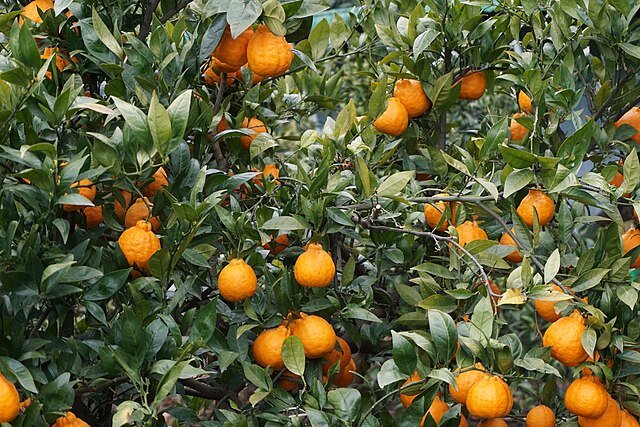Taste The Delicious (And Pricey) Bounty of Korean Fresh Fruit
Fresh fruit in Korea is highly prized and famously expensive. Baskets of beautiful, individually packaged fruit are often given as gifts, especially during the Chuseok harvest holiday and Seollal Lunar New Year. While some popular Korean fruits like strawberries, peaches, and apples are widely available in other countries, other regional and seasonal specialties are harder to track down outside of the peninsula. Here are some popular Korean fruits to make each season a little more bright, sweet, and refreshing.
참외: Korean Melon
Chamoe, also called the Oriental melon, is an ideal fruit for Korea’s sweltering summer months. Smaller than a honeydew or cantaloupe, the chamoe has a thin yellow skin and delicate white flesh. Chamoe doesn’t have the syrupy sweetness of a perfectly-ripe cantaloupe: the flavor is much more mild and subtle. In Hangul, chamoe is spelled “참외,” with the “외” derived from the word for cucumber “오이.” This etymology hints at the refreshing mildness of a slice of Korean melon.
감: Persimmons
Autumn is quickly approaching, bringing with it a very important fruit for Korean cuisine and culture, the persimmon. The glossy orange fruit is relatively cheap and serves many roles in Korean culture: its leaves can be used for tea, its pigment can be used to dye fabric, and the fruit can be dried into a chewy candy (곶감). In Buddhism, persimmons are also seen as a symbol of transformation: they start out sour, dry, and green before transforming into the widely-loved lush, sugary fruit.
배: Korean Pear
The Korean pear’s crisp texture, juicy interior, and sweet floral taste have won the fruit popularity outside of Asia in recent years. There’s a chance you’ve seen these pears–carefully wrapped in their white plastic skirts–at your local supermarket. While Korean pears are great for snacking, they can also be found in different types of kimchi and play an integral part in many Korean meat dishes. For instance, when making bulgogi, a grated pear is often added to the beef marinade, where the pear’s enzymes help tenderize the meat.
Jeju Citrus
Jeju, the volcanic island off the coast of Korea, is renowned for its iconic and highly-prized citrus. By some estimates, over 85% of Jeju farmers grow citrus, and citrus accounts for 8% of Jeju’s total GDP. Jeju grows a wide variety of citrus from the famous Hallabong, to the sweet Cheonhyehyang tangerines, to the plentiful Gamgyul oranges. Jeju citrus can be more expensive than an average tangerine, but their distinctive sweetness makes the fruit well worth the price.





